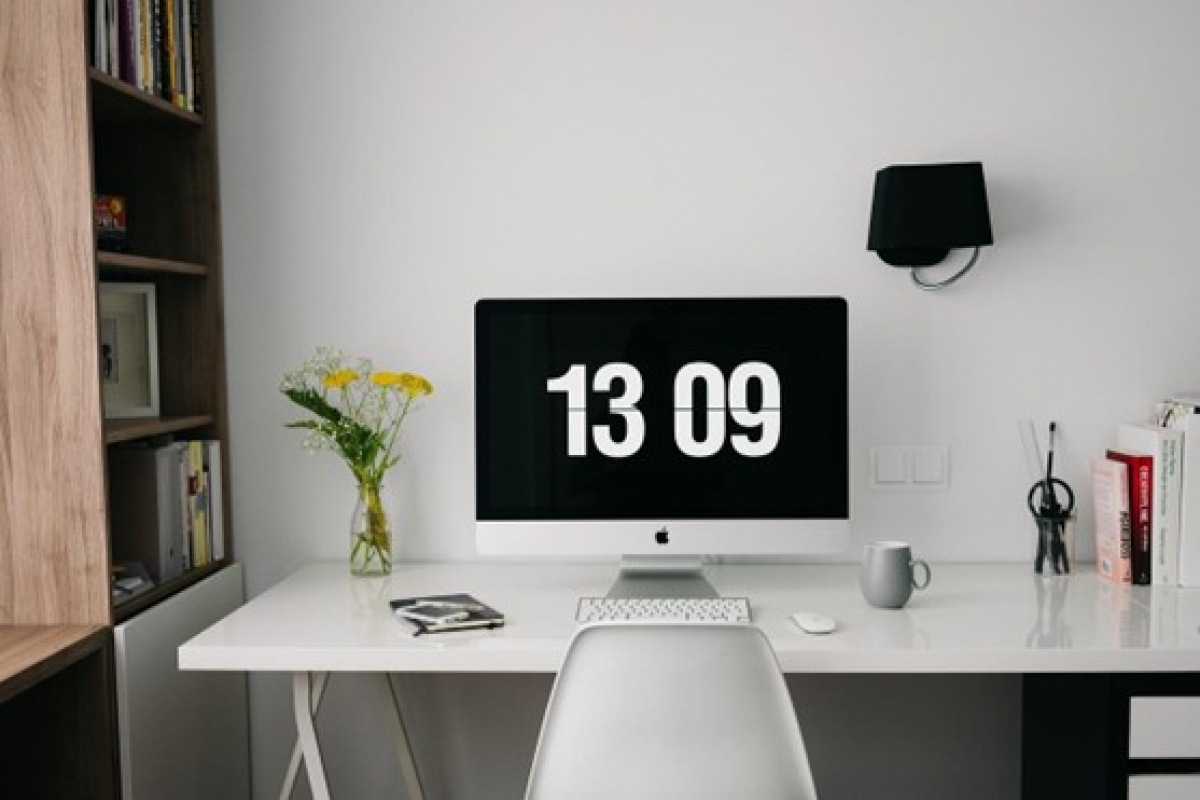Working from home has become increasingly popular in recent years, and with the current global pandemic, it has become a necessity for many. Creating a comfortable and efficient home office is essential for productivity and success.
In this guide, we will take you through a step-by-step process to build a smart home office that will help you get ahead of the game.
From choosing the right location to selecting the best equipment and furniture, we will provide you with all the tools you need to create a workspace that is both functional and aesthetically pleasing. We will also offer tips on how to stay organized, minimize distractions, and maximize your productivity.
Whether you are a freelancer, entrepreneur, or remote worker, this guide will help you create the perfect home office that will enable you to work smarter, not harder. So, let's get started on building the home office of your dreams!
The Benefits of a Smart Home Office
Working from home has its advantages, but creating a smart home office can take your productivity and success to the next level. A smart home office is a workspace designed specifically to meet your needs, with the right equipment and furniture, and a layout that maximizes your productivity. A well-designed home office can increase your efficiency, creativity, and comfort, while also reducing stress and distractions.
When you have a smart home office, you can work on your own terms. You can set your own schedule, work in a comfortable environment, and have the flexibility to complete your work when it's convenient for you. You'll have more control over your work-life balance, which can lead to increased job satisfaction and better mental health. Moreover, you can save time, money, and energy by eliminating the need to commute to a traditional office.
If you're looking to build a smart home office, you're in the right place. In the following sections, we will take you through a step-by-step process to help you create a workspace that is both functional and aesthetically pleasing.
Designing Your Home Office Layout and Furniture
Designing your home office layout and furniture is the first step in building a smart home office. A well-designed layout can increase your productivity, while the right furniture can make your workspace more comfortable and appealing.
The first thing to consider when designing your home office layout is the location. Ideally, you should choose a quiet and well-lit place in your home. You may want to consider a spare bedroom, a corner of your living room, or even a basement or attic space. Once you have chosen your location, it's time to think about the layout.
When designing your home office layout, you should consider factors such as the size and shape of your workspace, the location of windows and doors, and the placement of furniture. You should also consider the flow of traffic in your home and how it will affect your work.
When selecting furniture for your home office, you should consider factors such as comfort, ergonomics, and aesthetics. You should choose a desk and chair that are comfortable and ergonomic, with adjustable height and support for your back and arms. You should also choose furniture that complements the style of your home and reflects your personality.
Essential Equipment for a Productive Home Office
Having the right equipment is essential for a productive home office. You should invest in equipment that is reliable, efficient, and tailored to your needs. The following are some essential equipment for a productive home office:
Computer and Accessories
A computer is the heart of your home office. You should invest in a high-quality computer that meets your needs, with enough storage, memory, and processing power. You should also invest in accessories such as a mouse, keyboard, and monitor that are comfortable and reliable.
Internet Connection
A fast and reliable internet connection is essential for a productive home office. You should choose an internet service provider that offers high-speed internet, with enough bandwidth to support your work.
Printer and Scanner
A printer and scanner are essential for a home office. You should choose a printer that is reliable and efficient, with enough features to meet your needs. You should also choose a scanner that is easy to use and can handle different sizes and types of documents.
Lighting
Good lighting is essential for a productive home office. You should choose lighting that is bright and even, with enough light to reduce eye strain and increase productivity. You may want to consider a desk lamp or overhead lighting.
Setting Up Your Home Office for Maximum Productivity
Once you have designed your home office layout, selected the right furniture, and invested in essential equipment, it's time to set up your home office for maximum productivity. The following are some tips for setting up your home office for maximum productivity:
Organize Your Desk
A cluttered desk can be distracting and reduce your productivity. You should organize your desk by removing unnecessary items, using desk organizers, and keeping your work area clean and tidy.
Use a Task List
A task list can help you stay organized and focused on your work. You should create a task list each day and prioritize your tasks based on their importance and urgency.
Eliminate Distractions
Distractions can reduce your productivity and increase your stress. You should eliminate distractions by closing unnecessary tabs on your computer, turning off notifications, and avoiding social media during work hours.
Take Breaks
Taking breaks can help you recharge your energy and increase your productivity. You should take short breaks throughout the day, such as stretching, walking, or having a snack.
Staying Organized and Minimizing Distractions in Your Home Office
Staying organized and minimizing distractions are essential for a productive home office. The following are some tips for staying organized and minimizing distractions in your home office:
Use a Filing System
A filing system can help you organize your documents and reduce clutter. You should use a filing system that is easy to use and can be accessed quickly.
Keep Your Workspace Clean
A clean workspace can reduce stress and increase productivity. You should keep your workspace clean by removing clutter, wiping down surfaces, and vacuuming or sweeping regularly.
Use Headphones
Using headphones can help you eliminate distractions and focus on your work. You should choose headphones that are comfortable and offer good sound quality.
Set Boundaries
Setting boundaries can help you maintain a healthy work-life balance. You should set boundaries by establishing work hours, limiting work-related activities outside of work hours, and taking breaks throughout the day.
Creating a Comfortable and Aesthetically Pleasing Home Office
Creating a comfortable and aesthetically pleasing home office can increase your motivation and creativity. The following are some tips for creating a comfortable and aesthetically pleasing home office:
Use Colors
Colors can affect your mood and productivity. You should choose colors that are calming and inspiring, such as shades of blue, green, or yellow.
Add Plants
Plants can improve air quality and reduce stress. You should add plants to your home office that are easy to care for and complement your workspace.
Use Artwork
Artwork can add personality and inspiration to your home office. You should choose artwork that reflects your personality and enhances your workspace.
Add Comfortable Seating
Comfortable seating can reduce stress and increase productivity. You should choose seating that is comfortable and ergonomic, with support for your back and arms.
Tips for Maintaining a Healthy Work-Life Balance While Working from Home
Maintaining a healthy work-life balance is essential when working from home. The following are some tips for maintaining a healthy work-life balance:
Establish a Routine
Establishing a routine can help you stay organized and focused on your work. You should establish a routine that includes work hours, breaks, and time for personal activities.
Stay Active
Staying active can reduce stress and increase your energy. You should incorporate physical activities into your routine, such as yoga, walking, or jogging.
Stay Connected
Staying connected with family and friends can reduce stress and improve your mental health. You should make time for social activities, such as video calls, online games, or virtual happy hours.
Take Time Off
Taking time off can help you recharge your energy and reduce burnout. You should take regular breaks, such as weekends or vacations, and avoid working during your time off.
The Future of Smart Home Offices and Remote Work
The future of smart home offices and remote work is bright. As technology continues to advance, more and more people are choosing to work from home. Smart home offices will continue to evolve, providing more efficient and comfortable workspaces for remote workers.
Remote work will also continue to change the way we work and live. It will provide more flexibility and control over our work-life balance, while also reducing the environmental impact of commuting. As remote work becomes more mainstream, we can expect to see more companies embracing it and offering more opportunities for remote work.
Wrapping it Up
Building a smart home office is essential for productivity and success when working from home. By following the step-by-step process outlined in this guide, you can create a workspace that is both functional and aesthetically pleasing. You should start by designing your home office layout and furniture, then invest in essential equipment, and set up your home office for maximum productivity. Staying organized, minimizing distractions, and creating a comfortable and aesthetically pleasing workspace can help you maintain a healthy work-life balance and increase your motivation and creativity. With the future of smart home offices and remote work looking bright, now is the perfect time to build the home office of your dreams.

